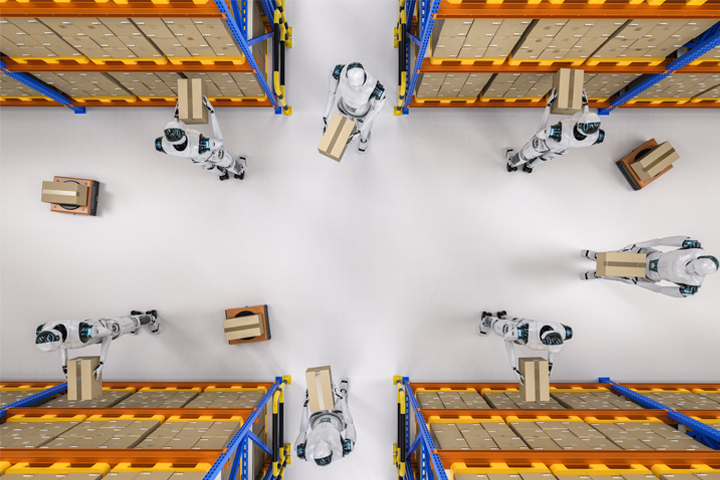With the persistent onslaught of the COVID-19 pandemic, factories worldwide are facing a prolonged halt in operations and are grappling with rising labor shortages. However, entrepreneurs who have already integrated unmanned systems in their factories have managed to mitigate the effects of COVID-19 and capitalize on market demands that their competitors are currently unable to meet. Some enterprises are even ramping up their investments in factory automation. From our observations of the industrial automation sector in recent years, unmanned systems not only reduce the need for manual labor but more crucially, they have the potential to substantially enhance production capacities by minimizing idle time within factories.
During the progression from handling raw materials to delivering finished goods, a substantial 70% of the total time is consumed by internal logistics tasks, where products are either in transit between different stations or in storage awaiting further processing. This idle period of 70% accounts for instances when no production activities are taking place. For example, the Liquid Crystal Module (LCM) assembly process entails numerous stations. Assembly operators must complete a designated number of semi-finished products before transferring them to the subsequent station, resulting in temporal gaps between batches of products supplied to each station. To address this issue, numerous companies leverage industrial automation tools like automated guided vehicles (AGVs), shuttle racks, and robotic arms to streamline internal logistics. Yet, can high-end equipment in isolation resolve the problem of idle time? In reality, for the automation equipment to handle tasks competently and effectively, there exists a pivotal factor that cannot be overlooked.
Unseen yet Fundamental: Dependable Networking Holds the Key to Automation
In light of the multitude of stations and AGVs within plants, several AGV providers support their clients in setting up path maps via the cloud. Users have the convenience of modifying the maps in the cloud and subsequently dispatching the updated map codes to the designated vehicles. This enhances scheduling flexibility and permits an array of pathing options between stations.
An influx of stations and AGVs typically demands a more intricate path map, amplifying the necessity for precision in AGV routing and control point management. Despite often being disregarded, inconspicuous wireless network devices play a vital role in enabling AGVs to navigate accurately within a factory. In most instances, factories feature numerous intersections and T junctions, with a critical zone of two-meter radius surrounding each intersection/junction crucial for AGV management. Although this layout may seem straightforward for human navigation, such areas can pose potential challenges for AGVs that rely on wireless communication. Any interference between the wireless client on an AGV and nearby wireless Access Points (APs) could result in a failure to transmit the vehicle’s location to the central control room. Similarly, obstacles along the AGV’s path, such as metal containers or carts, could disrupt wireless communication. Even brief disconnections, delays, or errors might lead to collisions between AGVs and other vehicles or objects, thereby stalling the entire production line.
Designing a wireless communication network is a more intricate task than it may initially seem. Common hurdles like Wi-Fi channel overlaps and interference can complicate deployment, and ensuring strong and extensive signal coverage across the entire factory floor poses its own set of challenges. A parallel can be drawn to everyday experiences with mobile phone reception, wherein specific regions suffer from weak signal due to terrain or structural impediments of buildings. Hence, it’s imperative to acknowledge that when instituting unmanned logistics systems, the often underestimated wireless network could indeed determine the success or failure of a million-dollar (or more) endeavor.
To establish an automated factory and fully leverage its benefits, it is crucial to integrate cutting-edge automation tools, refine redundant processes, and enhance logistics efficiency. Simultaneously, it is vital to select wireless network devices from reputable manufacturers and collaborate with skilled system integrators to guarantee the establishment of a robust foundation for your automated factory.
- Not Only for Automobiles: Discovering CANbus Technology in Various Industrial Settings - October 29, 2024
- Boost Your Network Performance: An Exciting Manual to PoE Switches! - September 10, 2024
- Understanding Gigabit Switches: Industrial vs Regular Gigabit - September 4, 2024


